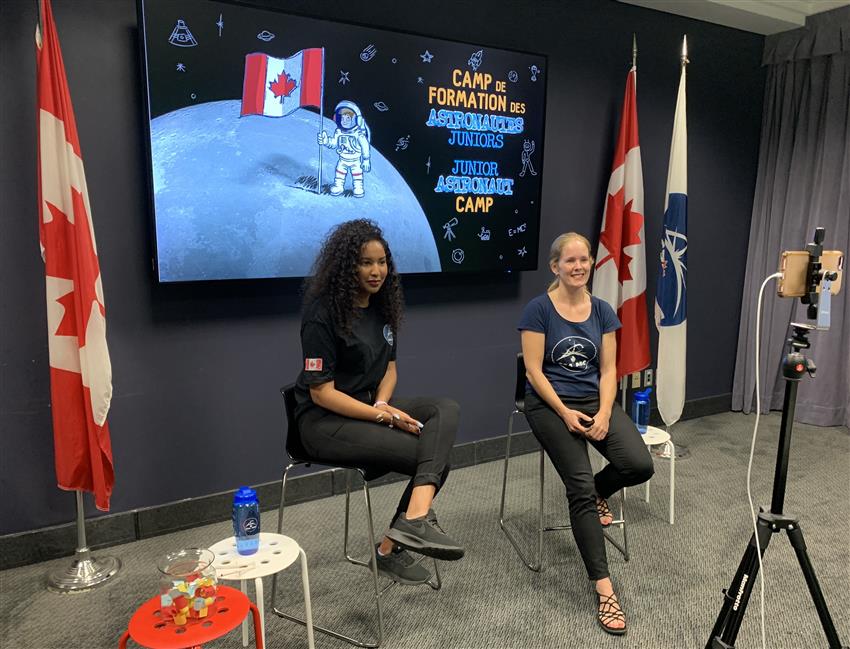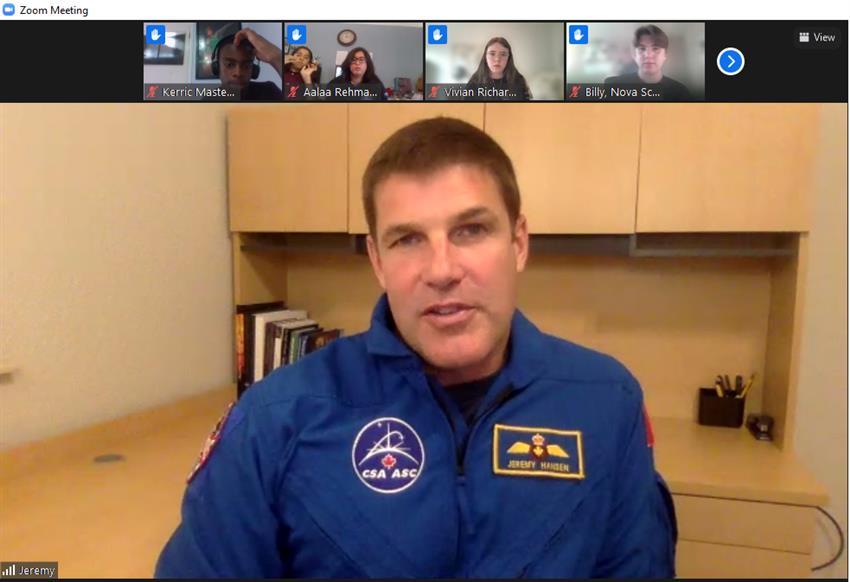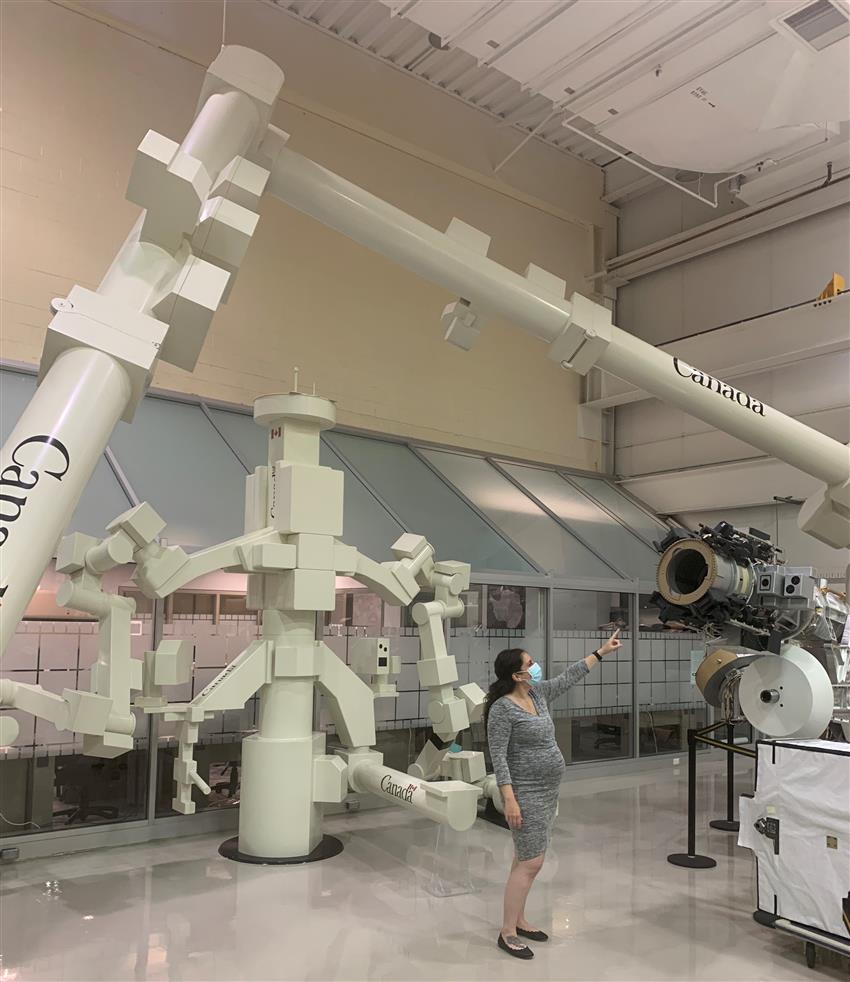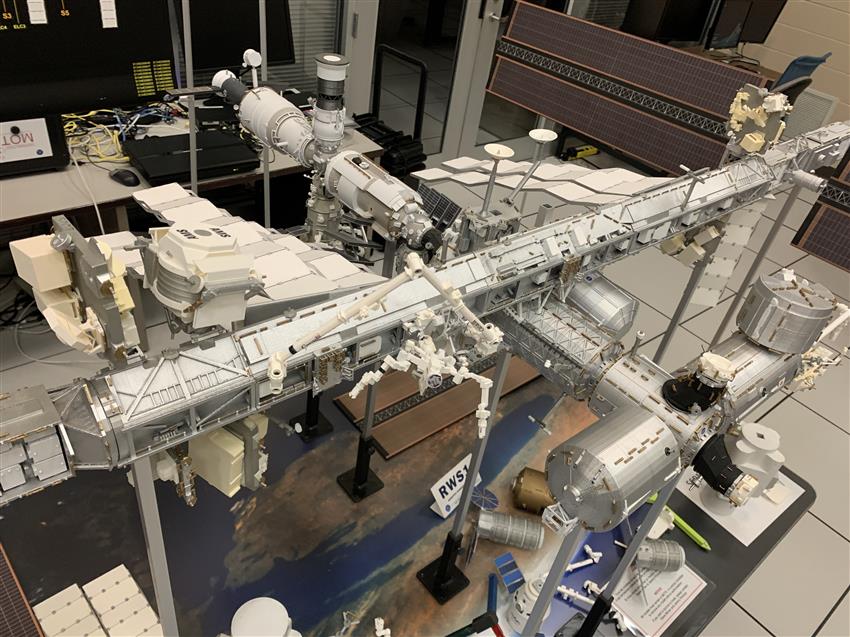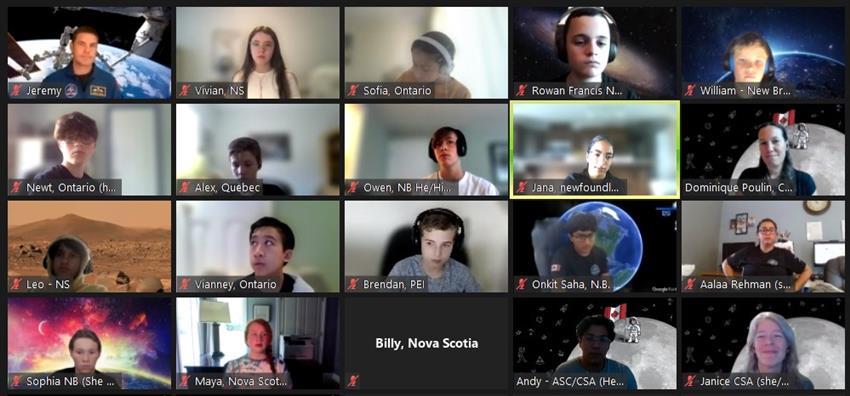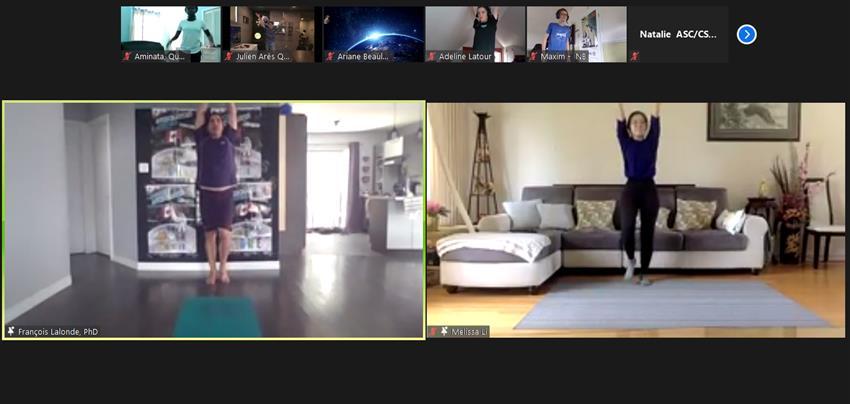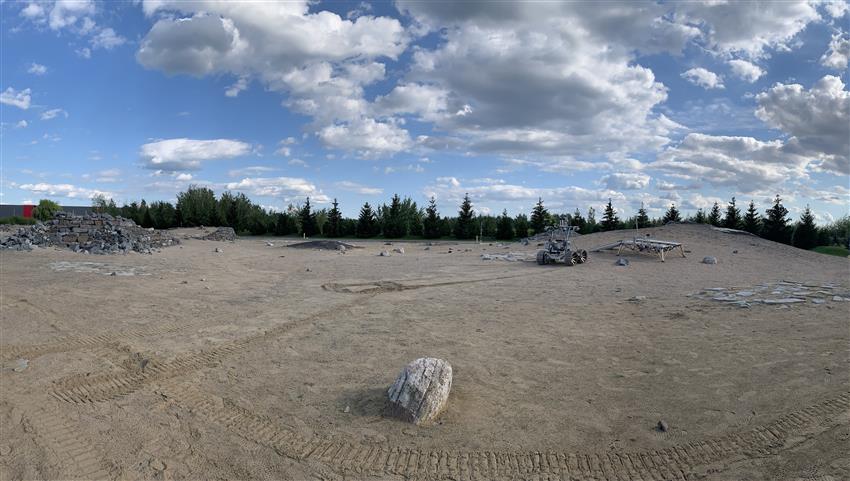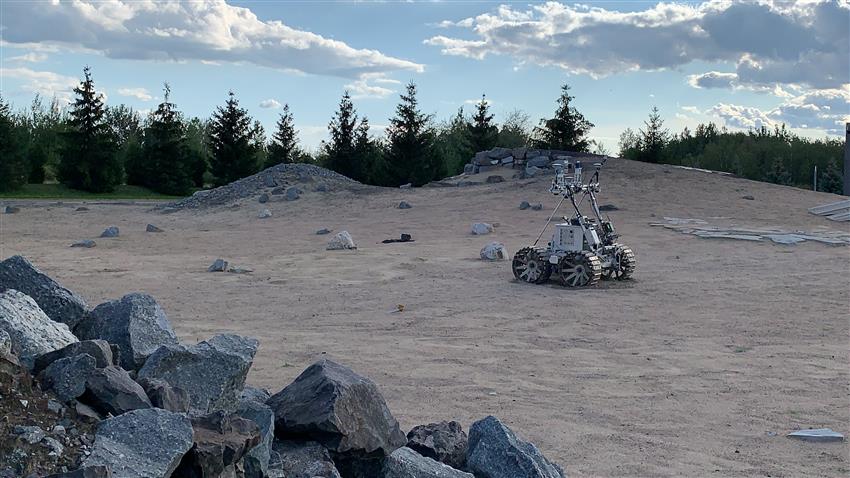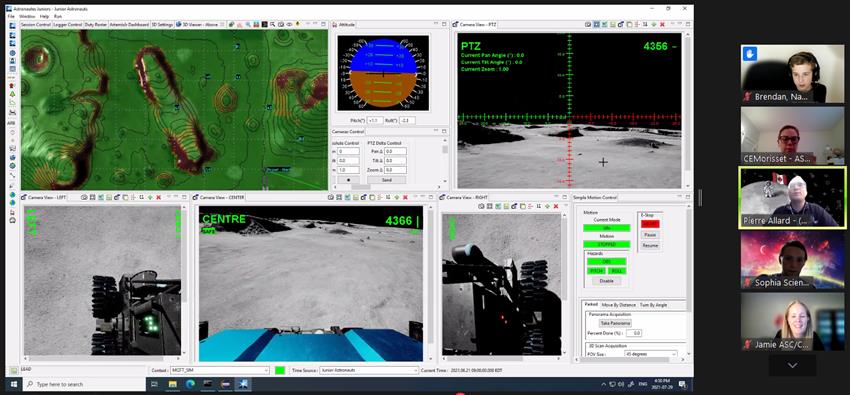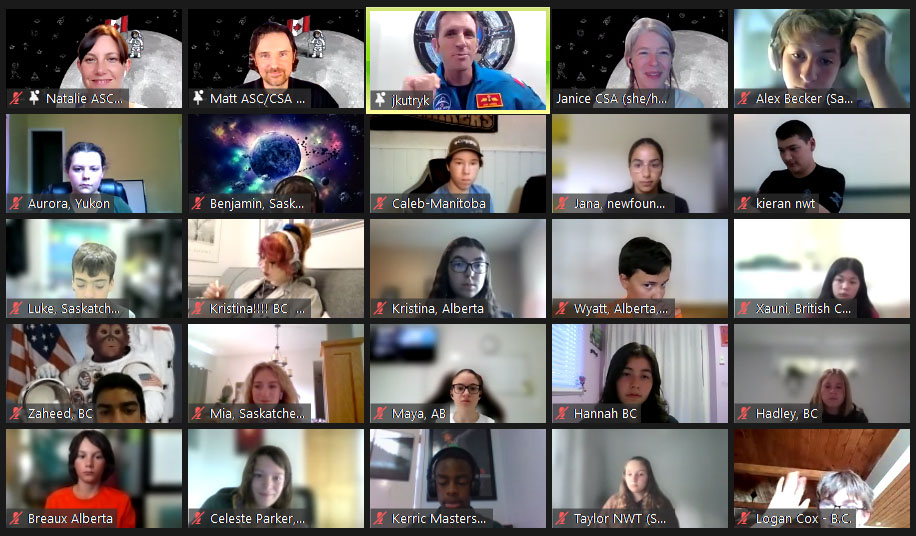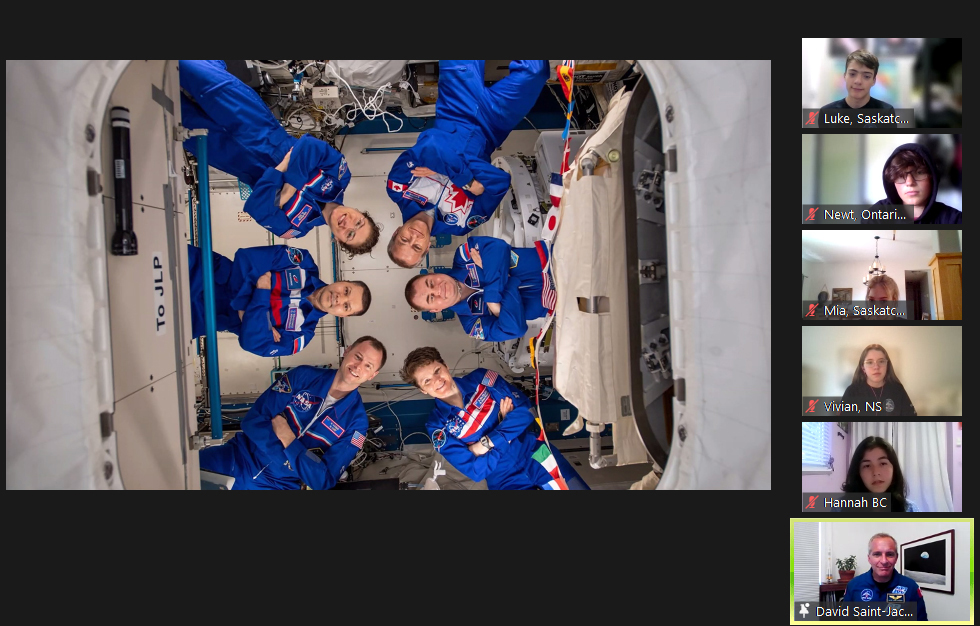Lift off to Junior Astronaut Camp!

On this page
After a year-long delay because of the pandemic, we are excited to finally kick off our Junior Astronaut Camp! This week, 52 young space enthusiasts from across Canada are virtually joining Canadian Space Agency (CSA) experts and astronauts for an exciting week of space training.
The day started with a special message from Thomas Pesquet, a French astronaut with the European Space Agency, that he recorded from aboard the International Space Station where he is currently living.
An out of this world message to Junior Astronauts and their educators (Credits: Canadian Space Agency, ESA, NASA.)
After taking some time to get to know each other through icebreaker activities, Isabelle Tremblay, Director, Astronauts, Life Sciences and Space Medicine, introduced astronaut Jeremy Hansen. Jeremy spoke about his experience, astronaut training and the future of space exploration, including the Artemis missions and the Lunar Gateway. He then answered their many questions. When asked about which vehicle he would like to fly to space on, he said: "I'm not picky! I just want to go to space!"
The first day ended by learning about the impact of microgravity on the human body and the importance of being fit and healthy in space… and on Earth! After exercising their brains all day, the participants and Jeremy got to exercise their bodies during a workout session led by the specialists who design the fitness programs for the Canadian astronauts.
Visit this page throughout the week for a daily summary of activities! You can also follow the camp on our Instagram and Facebook accounts!
Camp participants were put to work right away this morning. The first group learned about space nutrition and producing food in space. Thinking about lighting, irrigation, food and crew safety, nutritional value and many other important factors, they worked in teams to develop a system to grow food on the Moon. They used their creativity and problem-solving skills to develop awesome designs. Our experts Matt, Natalie and Hope were truly impressed!
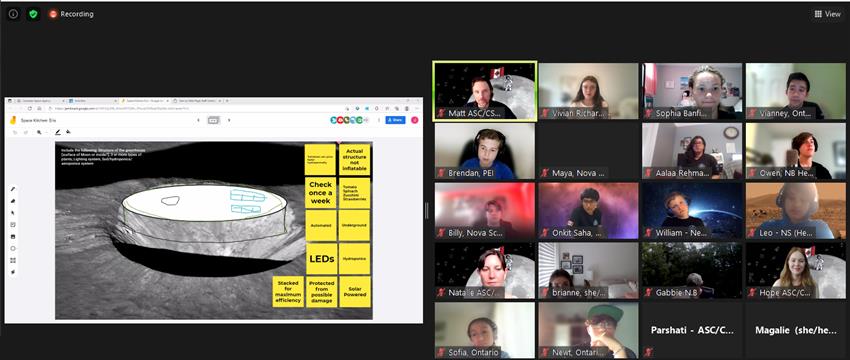
The Moon greenhouse designed by one of the teams in group Eris. Experts Matt Bamsey, Natalie Hirsch and Hope Kurylo were impressed by the thought the team put in about the automation system of the greenhouse to alleviate the astronauts' work. Nutrition-wise, they liked the variety of vegetables and fruits proposed by the team, including tomatoes, spinach, zucchini and strawberries. (Credit: CSA)
From the space kitchen they went on to virtually visit the CSA's robotics facilities in the company of Kristen Facciol, one of Canada's flight controllers (aka space robot operators) to learn about Canada's robotics contribution to the International Space Station (ISS). Different flight controllers will guide each group of campers this week through life-size models of Canada's robots on the International Space Station, the simulator used to train astronauts to operate Canadarm2, and the CSA's Robotics Mission Control Centre. Today, while in Mission Control, Kristen's colleague Jason Seagram was conducting live operations, moving Canadarm2 off the Mobile Base.
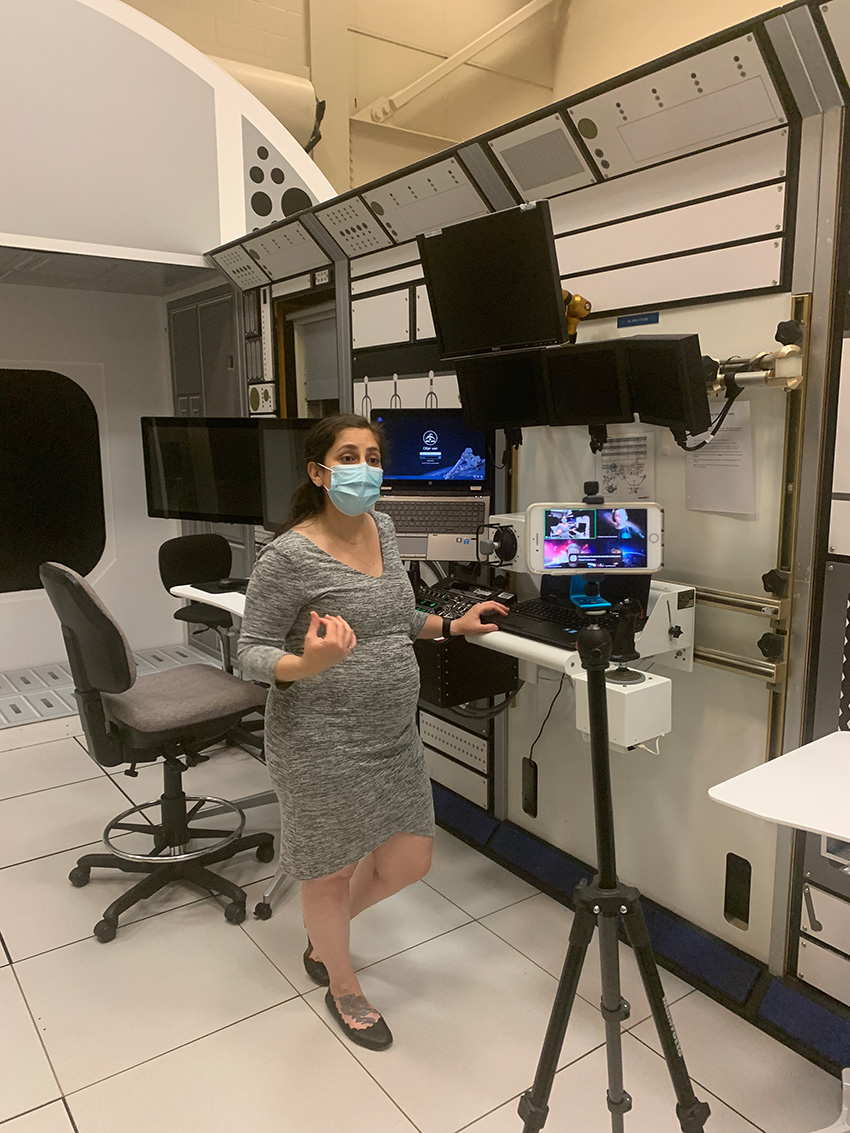
Kristen guided the participants through the robotics facility and the 3D printed model of the International Space Station used to train international astronauts, flight controllers and capcoms on how to operate Canadarm2. While Brendan, from PEI, wondered what the Space Shuttle's Canadarm did compared to Canadarm2 on the ISS, Rowan, from Nova Scotia, asked what the upcoming Canadarm3 will be used for. If you don't know either, you can learn about it on our website! (Credit: CSA)
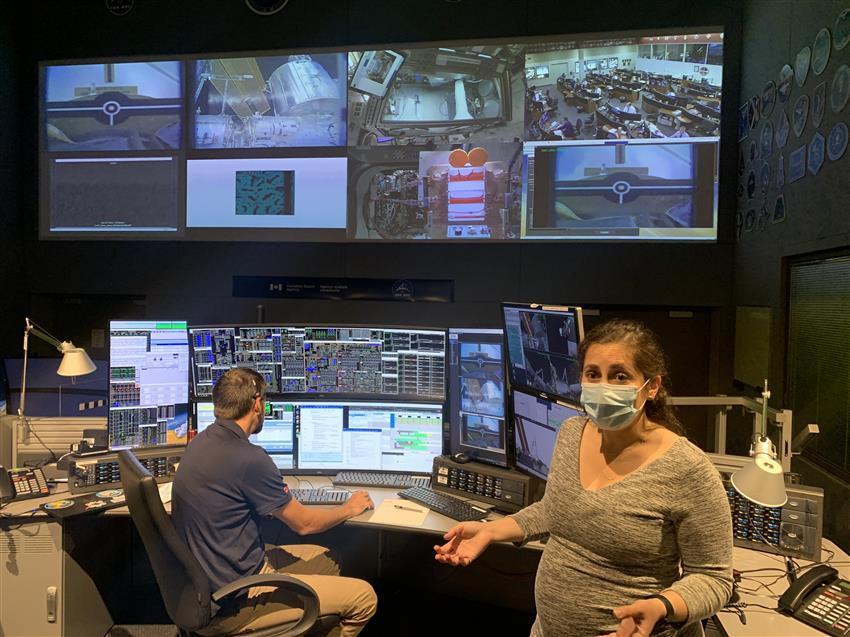
The CSA's Robotics Mission Control Centre is designed to function in the same way as NASA's Mission Control Center in Houston, Texas. Did you know that most Canadarm2 and Dextre operations are conducted from CSA headquarters? In the photo, we see Kristen Facciol and her colleague Flight Controller Jason Seagram, who was operating Canadarm2 live. (Credit: CSA)
Later in the day, the other groups took part in the Earth Detectives and Commanding a Rover activities. More on those activities later this week!
Today, junior astronauts learned about how Earth observation satellites collect invaluable data for Canadians and how it is used to resolve issues such as helping captains safely navigate through Arctic waters, farmers maximize their crop yields, first responders save lives, and so much more.

Astronaut Jeremy Hansen joined the teams from Eastern Canada in their quest to use satellite imagery to ensure the public safety of Canadians. (Credit for the screen capture: CSA; credit for the image overlay: Google Earth and RADARSAT Constellation Mission Imagery © Government of Canada (). RADARSAT is an official mark of the CSA. Value-added products generated by Environment and Climate Change Canada's Canadian Ice Service.)
The junior astronauts were then called upon to work on two disaster events in different parts of the country, one on land and one on water, led by expert Dominique Poulin. By using a few tools and satellite images, including some provided by the Canadian Ice Service and Natural Resources Canada, they explored the surroundings and helped detect an anomaly near a ship with the support of our team and astronaut Jeremy Hansen. They were also called upon to locate a major flood elsewhere in the country. In both cases, they asked important questions to inform their advice to response teams and formulated a few strategies for protecting stranded citizens, wildlife and infrastructure from potential threats.
Astronauts Joshua Kutryk and David Saint-Jacques dropped by to work with their junior crewmates during today's Space Kitchen and Earth Detectives activities.
When asked about astronaut photography from space, David explained that astronauts often receive photo assignments to capture specific Earth features, cities or weather phenomena, both for research purposes and for different projects such as the CSA's Exploring Earth. During his mission, his favourite pastime was to look at the planet from the International Space Station's big bay window, the cupola. One day, he was taking photos and noticed a huge column of grey smoke. He sent the photos to NASA and was told that he was the first person to witness a gigantic volcano eruption on an uninhabited island south of Korea. No one on Earth was aware of the volcano before he spotted it from space. Our planet being so big, some things can only be seen from the perspective of space.
Today, we also held our last three of eight rover missions. In small teams, all the campers went on a two-hour mission on the Moon during the week. After getting a crash course in geology from Caroline-Emmanuelle Morisset, Program Scientist in Planetary Science, they remotely operated the Juno rover located at the CSA's headquarters guided by engineers Pierre Allard and David Gingras. Just like on a real rover mission, everyone had a role to play – Mission Director, Navigator, Scientist, Operators and Flight Engineers – and had to work as a team to achieve the mission's objectives. This included finding basalt and ilmenite rock samples with the help of the rover's cameras, investigating the cause of the loss of communication, calculating distances and angles while avoiding obstacles, and preserving the health and power of Juno.
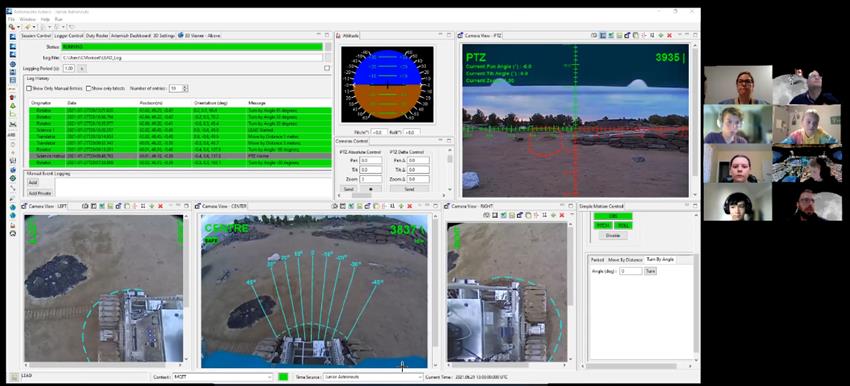
The Apogy interface used by team Buck (pictured here) and all the participants to command the rover. Apogy was developed by CSA engineers to remotely operate rovers. The images of the CSA analogue terrain that you see in the interface are generated in real time by the rover cameras. (Credit: CSA)
This evening, the campers are invited to take part in an optional game night to relax and, hopefully, create new friendships with their fellow junior astronauts!
The final day of the camp started with astronaut Jenni Sidey-Gibbons joining the junior astronauts for their last workout of the week.
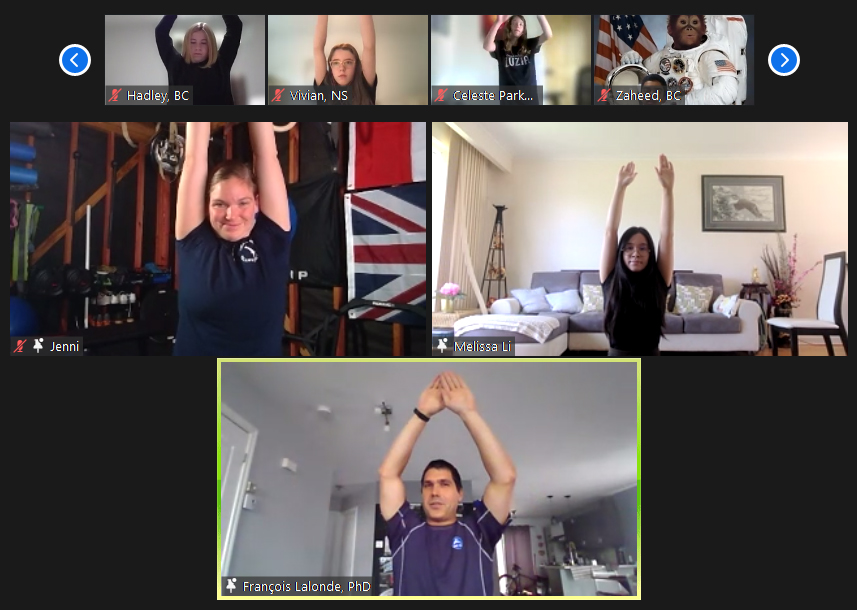
Astronaut Jenni Sidey-Gibbons encourages the junior astronauts during the final workout session of the week with the CSA's exercise specialists Melissa and François. She told them that her favourite physical activity is weightlifting, especially Olympic lifting. Did you know that Jenni also played rugby before being recruited as an astronaut? (Credit: CSA)
A very important objective of the Junior Astronaut Camp was to showcase some of the many exciting careers in the space industry. In addition to the scientists, engineers and astronauts they met during the activities, the junior astronauts took part in an informal chat with experts from a variety of space disciplines, speed networking-style. Inspired by some of the comments shared by the participants in their application videos and their profiles, we put together a roster of eight experts who talked with them about their studies, career path and work at the CSA, and answered questions.
To end the very busy week, astronaut David Saint-Jacques, the most recent Canadian to have lived and worked aboard the International Space Station, talked about his mission and shared a few lessons and some inspiring words with the 52 bright young Canadians who joined us for this exciting week of space training. He urged them to find a passion, take care of their body, persevere in what they accomplish and become someone others can rely on.
Thank you for a fun space-filled week! (Video summary coming next week.) We hope to see the camp participants in the future, either at the CSA or in one of the many excellent Canadian space companies. Stay curious and dream big!It's a wrap for the Junior Astronaut Camp!
Credits: Canadian Space Agency, Google Earth, NASA/GSFC/Arizona State University, SpaceX
